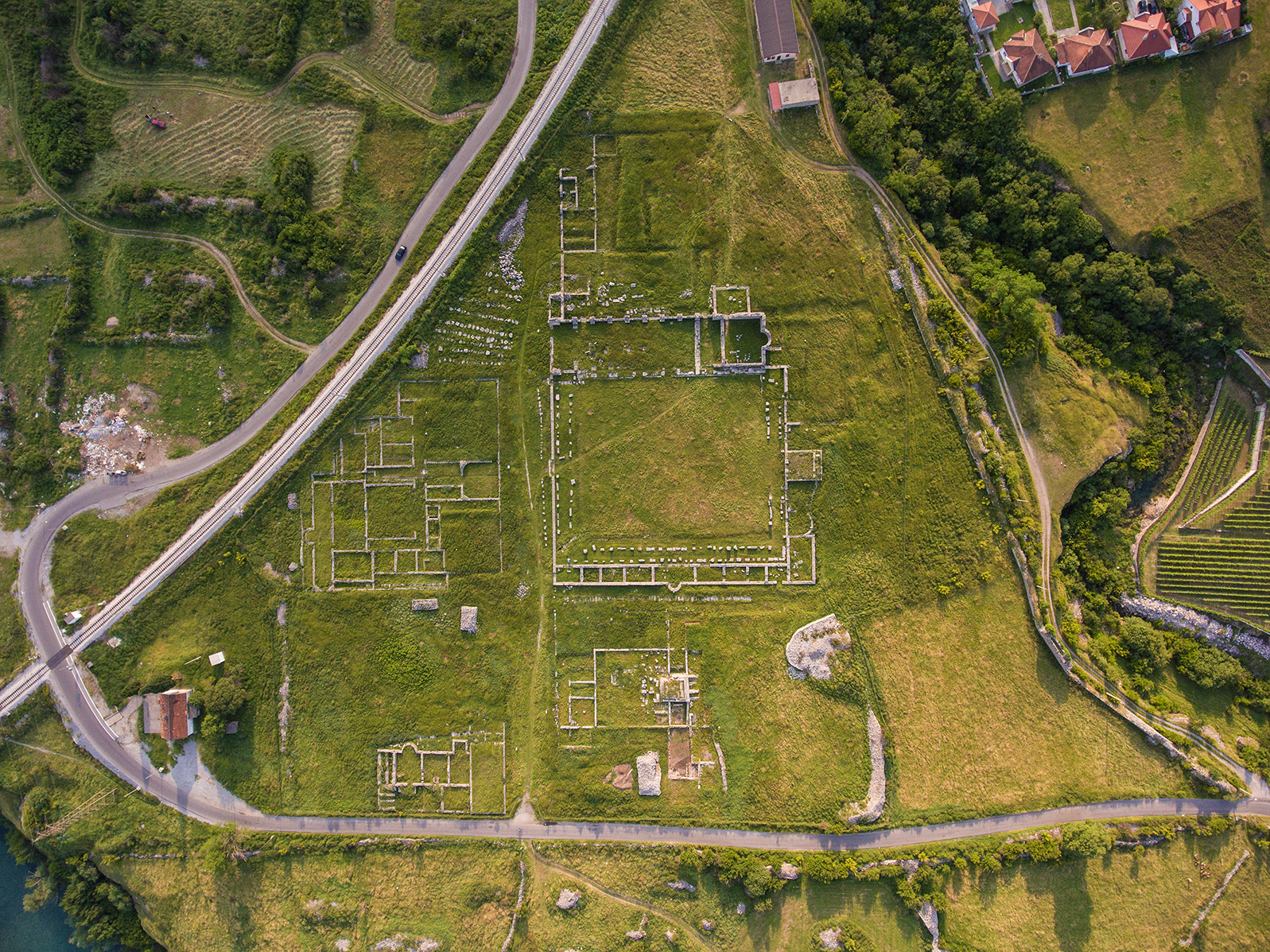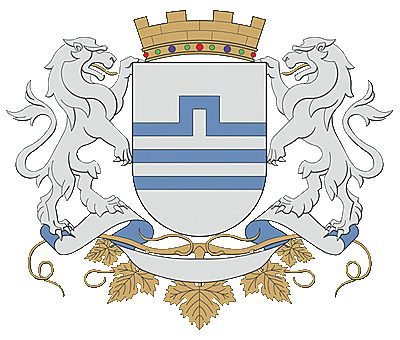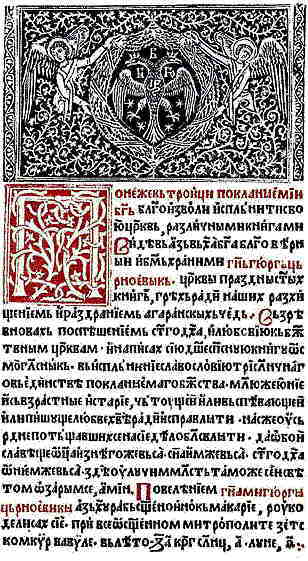|
Božidar Vuković
Božidar Vuković ( sr-Cyrl, Божидар Вуковић, , ; c. 1460 — c. 1539) was one of the first printers and editors of Serbian books in Montenegro. He founded the famous Vuković printing house in Venice. His printing house was operational in two periods. In first period 1519–21 three books were printed (''Psalter'', ''Liturgijar'' and ''Molitvenik'' or ''Zbornik''). In the second period 1536–40 two books were printed (2nd edition of ''Molitvenik'' or ''Zbornik'', and ''praznični Minej'' or ''Sabornik''). Biography Early life According to his own books, Vuković was born after 1460. In his 1519/20 ''Psalter'', Vuković had signed himself as "Božidar Vuković of the Đurići, of Podgorica" (). He was most likely born in the town of Podgorica, where he did own a house and several parcels of land in its vicinity, as recorded even after his emigration to Western Europe when he grew up - the lands he owned were probably family heritage. This seems to be confirme ... [...More Info...] [...Related Items...] OR: [Wikipedia] [Google] [Baidu] |
Podgorica
Podgorica ( cnr-Cyrl, Подгорица; ) is the Capital city, capital and List of cities and towns in Montenegro, largest city of Montenegro. The city is just north of Lake Skadar and close to coastal destinations on the Adriatic Sea. Historically, it was Podgorica's position at the confluence of the Ribnica (Morača), Ribnica and Morača River, Morača rivers and at the meeting-point of the fertile Zeta Plain and Bjelopavlići Valley that encouraged settlement. The surrounding landscape is predominantly mountainous terrain. After World War II, Podgorica was first designated as the capital of Montenegro in 1946. At that time, it was renamed Titograd in honor of Josip Broz Tito, the leader of Yugoslavia. It served as the capital of the Socialist Republic of Montenegro within the Socialist Federal Republic of Yugoslavia until Montenegro's declaration of independence in 2006, after which it was reaffirmed as the capital of an independent Montenegro. The city's original name, Pod ... [...More Info...] [...Related Items...] OR: [Wikipedia] [Google] [Baidu] |
Medun
Medun () is a settlement located 13 km northeast of the capital Podgorica, Montenegro. The village houses the archaeological site of the ancient fortified city of ''Medeon''. It is situated in the tribal area of Upper Kuči, one of the highland tribes. In the 2003 census, it had 108 inhabitants. In ancient times, Medun was inhabited by the Illyrians between the 4th and 3rd centuries BC. Geography As Mariano Bolizza described in 1614, it is situated on a beautiful hill on a cleft in the mountainside, between two other mountains, overlooking a very spacious valley.Elsie, p. 155 History Ancient and Roman times Medun is an old town and fortress, situated 13 kilometers northeast from Podgorica, Montenegro. It was erected originally as a fortress, later on as a town, between 4th and 3rd centuries BC, by Illyrians living in the area. It was known as Medeon (), Meteon, or Modunense. Well preserved walls of the fortress were built of big blocks of trimmed stone, placed in a nu ... [...More Info...] [...Related Items...] OR: [Wikipedia] [Google] [Baidu] |
Palladin
Palladin is a protein that in humans is encoded by the ''PALLD'' gene. Palladin is a component of actin-containing microfilaments that control cell shape, adhesion, and contraction. Discovery Palladin was characterised independently by two research groups, first in the lab of Carol Otey (in 2000) and then in the lab of Olli Carpén (in 2001). It is a part of the myotilin-myopalladin-palladin family and may play an important role in modulating the actin cytoskeleton. Palladin, in contrast to myotilin and myopalladin, which are expressed only in striated muscle, is expressed ubiquitously in cells of mesenchymal origin. Palladin was named after the Italian Renaissance architect Andrea Palladio, reflecting its localization to architectural elements of the cell. Isoforms In humans, it appears that seven different isoforms exist, some of which arise through alternative splicing. In mice, three major isoforms of palladin arise from a single gene. These isoforms contain between ... [...More Info...] [...Related Items...] OR: [Wikipedia] [Google] [Baidu] |
Duke
Duke is a male title either of a monarch ruling over a duchy, or of a member of Royal family, royalty, or nobility. As rulers, dukes are ranked below emperors, kings, grand princes, grand dukes, and above sovereign princes. As royalty or nobility, they are ranked below grand dukes and above or below princes, depending on the country or specific title. The title comes from French ''duc'', itself from the Latin language, Latin ''dux'', 'leader', a term used in Roman Republic, republican Rome to refer to a military commander without an official rank (particularly one of Germanic peoples, Germanic or Celts, Celtic origin), and later coming to mean the leading military commander of a province. In most countries, the word ''duchess'' is the female equivalent. Following the reforms of the emperor Diocletian (which separated the civilian and military administrations of the Roman provinces), a ''dux'' became the military commander in each province. The title ''dux'', Hellenised to ''do ... [...More Info...] [...Related Items...] OR: [Wikipedia] [Google] [Baidu] |
Liturgical Book
A liturgical book, or service book, is a book published by the authority of a church body that contains the text and directions for the liturgy of its official Church service, religious services. Christianity Roman Rite In the Roman Rite of the Catholic Church, the primary liturgical books are the Roman Missal, which contains the texts of the Mass (liturgy), Mass, and the Roman Breviary, which contains the text of the Liturgy of the Hours. With the Mass of Paul VI, 1969 reform of the Roman Missal by Pope Paul VI, now called the "Ordinary Form of the Roman Rite", the selection of Scriptural readings was expanded considerably and thus required a new book called the Lectionary. The Roman Ritual contains the texts for administering some Sacraments of the Catholic Church, sacraments other than the Mass (liturgy), Mass such as baptism, the Sacrament of Penance (Catholic Church), sacrament of penance, the Anointing of the Sick (Catholic Church), anointing of the sick, and the sacram ... [...More Info...] [...Related Items...] OR: [Wikipedia] [Google] [Baidu] |
Scuola Dei Greci
The Scuola dei Greci (literally, ''School of the Greeks'') was the confraternity of the Greek community in Venice. Its members were primarily Greeks, but also included Serbs. History The ''Scuole Piccole of Venice, Scuole Piccole'' were Confraternity, confraternities located in Venice. They were formed by migrants who were Venetian citizens or came from the Stato da Mar. These institutions were officially supported by the Venetian state which promoted inclusivity of diasporic communities as a means to instill loyalty to its subjects and regulate the activities and relations of its migrant citizens. They provided an environment for the social, cultural and religious activities of their members. The term ''greci'' referred to their religious affiliation. The Greek minority was present in Venice as early as the 13th century, but increased greatly in the 15th and 16th centuries after the Fall of Constantinople and the Ottoman Empire, Ottoman expansion into the former Byzantine Emp ... [...More Info...] [...Related Items...] OR: [Wikipedia] [Google] [Baidu] |
Eastern Orthodox Christian
Eastern Orthodoxy, otherwise known as Eastern Orthodox Christianity or Byzantine Christianity, is one of the three main Branches of Christianity, branches of Chalcedonian Christianity, alongside Catholic Church, Catholicism and Protestantism. Like the Pentarchy of the first millennium, the mainstream (or "Canon law of the Eastern Orthodox Church, canonical") Eastern Orthodox Church is Organization of the Eastern Orthodox Church, organised into autocephalous churches independent from each other. In the 21st century, the Organization of the Eastern Orthodox Church#Autocephalous Eastern Orthodox churches, number of mainstream autocephalous churches is seventeen; there also exist Organization of the Eastern Orthodox Church#Unrecognised churches, autocephalous churches unrecognized by those mainstream ones. Autocephalous churches choose their own Primate (bishop), primate. Autocephalous churches can have Ecclesiastical jurisdiction, jurisdiction (authority) over other churches, som ... [...More Info...] [...Related Items...] OR: [Wikipedia] [Google] [Baidu] |
Budva
Budva (Cyrillic script, Cyrillic: Будва, or ) is a town in the Coastal Montenegro, Coastal region of Montenegro. It had 27,445 inhabitants as of 2023, and is the centre of Budva Municipality. The coastal area around Budva, called the Budva Riviera, is the center of Montenegrin tourism, known for its well-preserved medieval walled city, sandy beaches and diverse nightlife. Budva is 2,500 years old, which makes it one of the oldest settlements on the Adriatic coast. Etymology In Serbo-Croatian, the town is known as Будва or ''Budva''; in Italian language, Italian and Latin as ''Budua''; in Albanian language, Albanian as ''Budua'', and in (classical/ancient) Greek language, Greek as ''Bouthoe'' (Βουθόη) and ''Butua'' (Βουτούα). History A legend recounts that Bouthoe (Βουθόη - ''Bouthoē'') was founded by Cadmus, the founder of Thebes, Greece, when exiled out of Thebes, finding a shelter in this place for him and his wife, goddess Harmonia (mytholo ... [...More Info...] [...Related Items...] OR: [Wikipedia] [Google] [Baidu] |
Venice
Venice ( ; ; , formerly ) is a city in northeastern Italy and the capital of the Veneto Regions of Italy, region. It is built on a group of 118 islands that are separated by expanses of open water and by canals; portions of the city are linked by 438 bridges. The islands are in the shallow Venetian Lagoon, an enclosed bay lying between the mouths of the Po River, Po and the Piave River, Piave rivers (more exactly between the Brenta (river), Brenta and the Sile (river), Sile). As of 2025, 249,466 people resided in greater Venice or the Comune of Venice, of whom about 51,000 live in the historical island city of Venice (''centro storico'') and the rest on the mainland (''terraferma''). Together with the cities of Padua, Italy, Padua and Treviso, Italy, Treviso, Venice is included in the Padua-Treviso-Venice Metropolitan Area (PATREVE), which is considered a statistical metropolitan area, with a total population of 2.6 million. The name is derived from the ancient Adr ... [...More Info...] [...Related Items...] OR: [Wikipedia] [Google] [Baidu] |
Đurađ Crnojević
Đurađ Crnojević ( sr-cyr, Ђурађ Црноjeвић, ; d. 1514) was the last Serbian medieval Zeta under the Crnojevići, Lord of ZetaSlijepčević 1974, p. 43: "Према Карлу Хопфу и Балшићи и Црнојевићи »припадају без спора српскоме племену». between 1490 and 1496, from the Crnojević dynasty. The son of Ivan Crnojević and the Albanians, Albanian noblewoman Goisava Arianiti family, Arianiti, he was the founder of the Printing House of Crnojevići, first Serbian printing house. Crnojević styled himself ''"Duke of Zeta"''. He was well known by his great education, knowledge of astronomy, geometry and other sciences. During his short-term reign he became famous for making efforts to spread the cultural heritage rather than for his political successes. The Ottoman Turks, Ottomans made him leave Zeta in 1496. His brother Stefan II Crnojević, Stefan inherited his position of the Lord of Zeta. In 1497 Venetians i ... [...More Info...] [...Related Items...] OR: [Wikipedia] [Google] [Baidu] |
Zeta Under The Crnojevići
Zeta ( sr-cyrl, Зета) was one of the Serbian medieval polities that existed between 1371 and 1496, whose territory encompassed parts of present-day Montenegro and northern Albania. The Crnojević noble family ruled the Principality of Zeta from 1451 until 1496. Background In 1421, before his death and under the influence of his mother Jelena, Balša III passed the rule of Zeta to Serbian Despot Stefan Lazarević. Despot Stefan fought the Republic of Venice and regained Bar in mid-1423, and in 1424 his nephew Đurađ Branković regained Drivast and Ulcinium (Ulcinj). With the death of Despot Stefan in 1427, his nephew Đurađ inherited the rule of Serbia. History Ascent to power The most important roles in establishing this family's rule in Zeta were played by Stefan I Crnojević (1451–1465) and his son Ivan (1465–1490). Ivan's son Đurađ Crnojević (1490–1496) was the last ruler from this dynasty. Stefan Stefan I Crnojević consolidated his power in Zeta and ru ... [...More Info...] [...Related Items...] OR: [Wikipedia] [Google] [Baidu] |
Cetinje
Cetinje ( cnr-Cyrl, Цетиње, ) is a List of cities and towns in Montenegro, town in Montenegro. It is the former royal capital ( cnr-Latn-Cyrl, prijestonica, приjестоница, separator=" / ") of Montenegro and is the location of several national institutions, including the Blue Palace, official residence of the president of Montenegro. According to the 2023 census, the town had a population of 12,460 while the Old Royal Capital Cetinje, Cetinje Municipality had 14,465 residents. Cetinje is the centre of Cetinje Municipality. The city rests on a small karst plain surrounded by limestone mountains, including Lovćen, Mount Lovćen, the legendary mountain in Montenegrin historiography. Cetinje was founded in the 15th century and became a cradle of the culture of Montenegro. Its status as the honorary capital of Montenegro is due to its heritage as a long-serving former capital of Montenegro. Name In Montenegrin, Bosnian, Croatian and Serbian, it is known as ''Cetinje'' ... [...More Info...] [...Related Items...] OR: [Wikipedia] [Google] [Baidu] |







